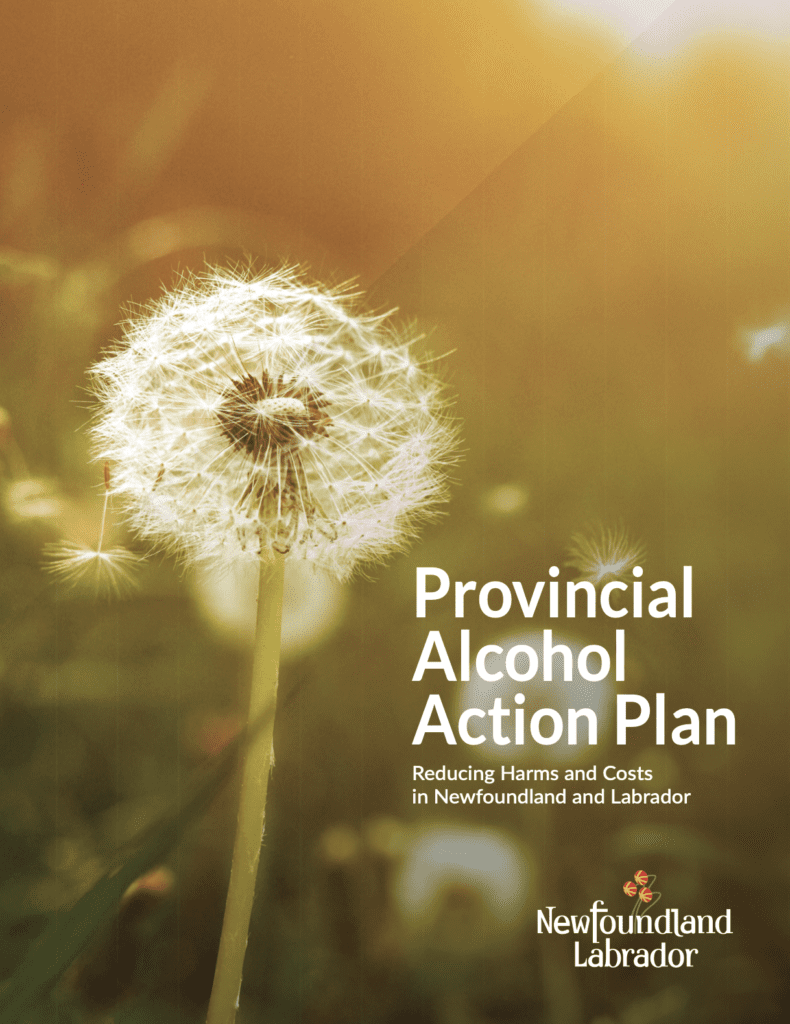The provincial government of Newfoundland and Labrador has released a new alcohol action plan. Back in 2017, the provincial government released the “Towards Recovery: The Mental Health Addictions Action Plan for Newfoundland and Labrador” that called for the development of an alcohol action plan. Five years later, the much anticipated alcohol action plan has arrived.
Globally, alcohol is linked to over 200 diseases including, cancer, cardiovascular diseases, HIV/AIDS, tuberculosis, fetal alcohol spectrum disorders (FASD) and mental health problems.
Harm caused by the alcohol industry places a heavy burden to Canadian people and communities. Every year the products and practices of the alcohol industry kill 15,000 Canadians. For example, alcohol causes more hospitalizations in Canada than heart attacks.
In Newfoundland and Labrador costs due to alcohol harm amounted to $318 million in 2017. This included costs related to lost productivity, healthcare, criminal justice and other direct costs.
The new provincial alcohol action plan sets a clear methodology to prevent and reduce alcohol harm, prioritizing a public health approach. The plan also acknowledges and values indigenous led-approaches to solving these problems.
The provinical government recognizes that social determinants of health, such as income, education level, physical and social environments have an impact on people’s health. The government renews its commitments to, striving for equitable access to services, supporting healthy living and wellness strategies and social and emotional learning programs and curiculums in schools. The government will also implement a stepped-care approach to interventions and treatment to improve accessibility of services and will also continue to focus on impaired driving countermeasures.
The new action plan has a strong monitoring mechanism. It will be monitored across measurable indicators such as alcohol sales, consumption rates, alcohol-related deaths and injuries, hospitalizations and treatment wait times. Regular reports will be made to the Provincial Mental Health and Addictions Council and Recovery Council. Data will be analyzed from a provincial population health lens leading to evidence-based decision making.
The Provincial Alcohol Action Plan includes 13 actions to prevent and reduce harms and costs of alcohol use. It encompasses the World Health Organization’s recommended best buy policies as outlined in the SAFER package for a comprehensive alcohol policy blue print. Below they are given in summary.
Prevention and promotion
- Healthy living
- Increasing awareness about alcohol use and promoting healthy living aiming to reduce alcohol harms.
- Developing social marketing campaigns to help people make better informed decisions.
- Awareness of high-risk alcohol use
- Improve provincial FASD networks’ capacity for prevention, screening and assesment. Learn what services are needed for people with FASD.
- Support health and safety labelling for alcohol products.
- Stigma awareness
- Reduce stigma through education on alcohol use, alcohol use disorder, impacts of adverse childhood experiences and intergenerational trauma.
Treatment
- Screening, brief intervention and referral
- Educate primary health care providers, police agencies, and community organizations to consistently screen, intervene early, and offer support.
- Incorporate screening, brief intervention and referral tools at all points of care.
- Alcohol treatment, aftercare and recovery
- Stepped-care treatment approach for alcohol use, including home-based withdrawal management.
- Explore the expansion of the regional opioid dependence treatment hubs to provide rapid access to treatment for all substance use disorders, including alcohol.
- Increase the number of providers with knowledge and skills in addictions medicine.
- Harm reduction
- Develping guidelines for managed alcohol programs through the Provincial Harm Reduction Team.
- Developing provinical harm reduction guidelines for primary health care, acute care, and community-based settings.
- Monitoring and surveillance
- Develop indicators and monitor data using various demographics to ensure inclusive reporting.
Availability
- Pricing
- Review the current statutory minimum price per standard alcoholic drink defined in the Liquor Control Act for on-premise establishments and the concept of minimum pricing for off-premise outlets.
- Physical availability
- Review existing density and placement of on- and off-premise establishments and the appropriateness of their current hours of operation.
- Advertising and marketing
- Amend the Liquor Control Act to develop regulations regarding alcohol-related marketing, advertising, sponsorships and promotions to support “moderate and responsible” alcohol use.

